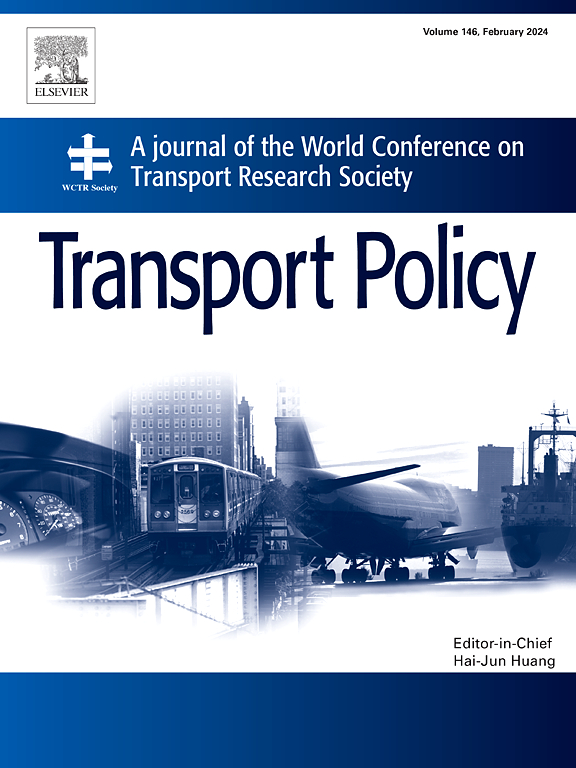What matters in promoting new town by High-Speed Railway station? Evidence from China
IF 6.3
2区 工程技术
Q1 ECONOMICS
引用次数: 0
Abstract
While theoretically High-Speed Rail (HSR) should stimulate local development, in practice, the emergence of prosperous HSR-driven new towns is not always guaranteed. A depth and comprehensive exploration of determinants of HSR new town development, especially station-district conditions, is lacking. Using a dataset of newly constructed HSR stations in China for the period 2009–2019, we employ an interpretable model combining Gradient Boosting Decision Tree (GBDT) and SHapley Additive exPlanations (SHAP) to explore how macro-level urban development, the meso-level HSR station-district conditions, and the micro-level HSR station environment influence HSR station area development. The results indicate that travel convenience to HSR station and station location significantly enhance the development of HSR new towns. Public transit lines and metro have positive effects, and the distances to the city center or pre-existing station exhibit negative impacts. We also identify an inverse relationship that urban and station-district economic levels drive HSR new town development. What's more, we identify the nonlinear and threshold effects and analyze the interactive effects of different influencing factors. These findings offer new perspectives on the promotion of the efficient development of HSR new towns.
促进高铁站周边新城镇发展的关键是什么?来自中国的证据
虽然从理论上讲,高铁(HSR)应能刺激当地的发展,但在实践中,由高铁带动的新城镇的繁荣并不总能得到保证。对高铁新城发展的决定因素,尤其是站区条件,缺乏深入而全面的探讨。利用 2009-2019 年期间中国新建高铁站的数据集,我们采用梯度提升决策树(GBDT)和 SHapley Additive exPlanations(SHAP)相结合的可解释模型,探讨了宏观层面的城市发展、中观层面的高铁站区条件和微观层面的高铁站环境对高铁站区发展的影响。结果表明,通往高铁站的出行便利性和高铁站的地理位置显著促进了高铁新城的发展。公共交通线路和地铁具有积极影响,而与市中心或原有车站的距离则表现出消极影响。我们还发现,城市经济水平和站区经济水平与高铁新城的发展存在反向关系。此外,我们还发现了非线性效应和门槛效应,并分析了不同影响因素的交互效应。这些发现为促进高铁新城的高效发展提供了新的视角。
本文章由计算机程序翻译,如有差异,请以英文原文为准。
求助全文
约1分钟内获得全文
求助全文
来源期刊

Transport Policy
Multiple-
CiteScore
12.10
自引率
10.30%
发文量
282
期刊介绍:
Transport Policy is an international journal aimed at bridging the gap between theory and practice in transport. Its subject areas reflect the concerns of policymakers in government, industry, voluntary organisations and the public at large, providing independent, original and rigorous analysis to understand how policy decisions have been taken, monitor their effects, and suggest how they may be improved. The journal treats the transport sector comprehensively, and in the context of other sectors including energy, housing, industry and planning. All modes are covered: land, sea and air; road and rail; public and private; motorised and non-motorised; passenger and freight.
 求助内容:
求助内容: 应助结果提醒方式:
应助结果提醒方式:


